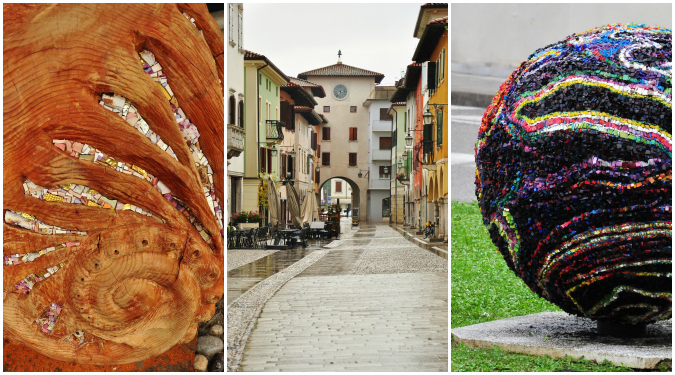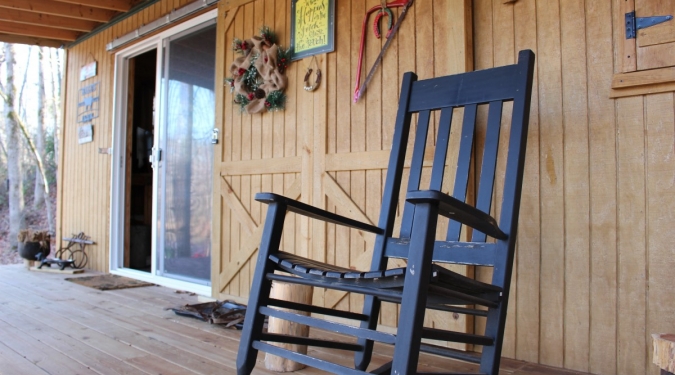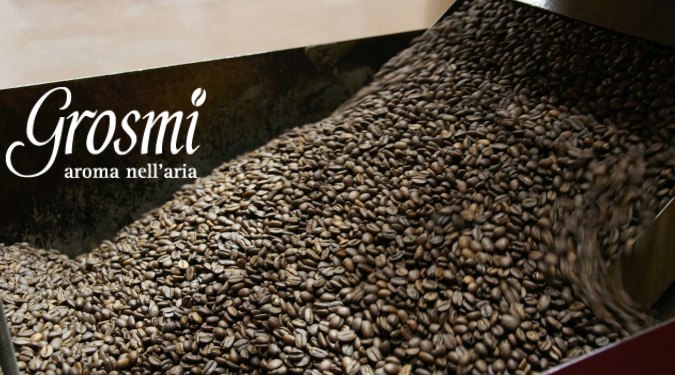Meet Grosmi Caffe - Friuli’s Favorite Coffee
Meet Grosmi Caffe - Friuli’s Favorite Coffee
Opening a fresh bag of coffee and catching a waft of its entrancing aroma is one thing, but experiencing the amazing scent of freshly roasted coffee beans directly in the roasting plant is another.
Here in Italy, I have the luxury of doing both!
Below, I'll introduce you to Grosmi Coffee - an artisanal coffee roasting plant located in Friuli-Venezia Giulia - and give you some useful tips and tricks direct from the Grosmi owners about properly brewing their delicious coffee, which you can now purchase from our Paramus, NJ store!
Proudly Presenting ... Grosmi Caffè.
This is the coffee that I always bring home for friends and family in the States when I am there for a visit. I tried it for the first time way back on 2008 while I was visiting a friend in Sacile (southwestern Friuli), where the roasting plant is located.
Little did I know at that time, I would be seeing much more of this coffee than I could have ever imagined! It's my favorite coffee to date.
It is already well-known throughout Italy so having the opportunity and privilege of offering this coffee for the first time in the U.S. is quite an honor for us at Valitalia.
History
Grosmi, like many companies in Italy, started out as a mom-and-pop business of the Francescut family. A coffee roaster was purchased and placed in the family's private home in 1958, and by 1959 they opened their first store in Sacile. Things grew from there, and at one point they strategically placed a coffee roaster inside their Sacile coffee shop.
The reason? The owner wanted to have the aroma of his coffee wafting around town on the weekly market day. I'm sure that many a nose found its way to the store thanks to this sales technique.
Today the family tradition is carried on by the Francescut sons; Ennio and Angelo.
Let The Tour Begin
So, let's move on to the good stuff, shall we?
Since I happen to know Angelo personally, it was a fun treat to be able to enter into his coffee world and learn more about the coffee roasting process. Appropriately, our tour began with a fresh espresso to prime the taste buds and the senses. Can't say no to that!
I spent a couple of hours just watching the production team work and took pictures of each step. Here is how it works:
Step 1: The burlap sacks of raw coffee beans are opened.
Step 2: The raw beans are poured into a hole in the floor which transports them into a large silo where they are prepared for roasting.
Step 3: The raw coffee beans are suctioned from the silo through a tube and sent into the roaster.
Step 4: The toasted coffee beans spill out of the roaster and into the cooling bin.
Step 5: The roasted beans are sent into a small silo that separates them from any excess matter (small twigs, rocks, etc.). Only the beans lightest in weight will make it to the next phase, while beans that are too heavy will be discarded.

Step 6: Beans are either ground or left whole and then sent on to the packaging phase.
Tips From Grosmi
It's time to start thinking more about the taste of the acutal coffee instead of masking it with syrups, sugars and other artificial flavors. Here are some tips from Angelo and Ennio (owners of Grosmi) when you are preparing their coffee at home:
Porcelain - Serve your coffee in porcelain cups. Porcelain will maintain a higher temperature for a longer period of time. It doesn't necessarily change the flavor of the coffee, but it does help to enhance the coffee's natural aroma. Our hint to you!
Moka - The Grosmi Arabica coffee that Valitalia carries is specifically designed for the Moka (read more about how to use the Moka here); hence using it in the Moka will yeild the best results.
Brewing it in a regular American coffee pot, for example, will cause your brewed coffee to have more of a sooty texture due to the coffee grounds that have passed through.
Water - Remember that the water will also greatly affect the flavor of the coffee (the Grosmi brewed in Italy will taste slightly different than the Grosmi brewed in your area).
In an espresso machine the flavor will be best with soft water,which has less limestone and mineral deposits. In the moka, however, the type of water used will not greatly affect the taste. If you use regular tap water at home, having a filter directly on the faucet head is a great idea.
You can purchase this artisanal coffee directly from our Paramus, NJ showroom. Store location and directions can be found here.
Stop by the store today and have a cup! We look forward to seeing you there.






